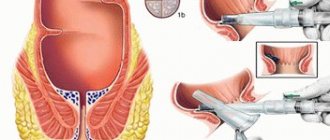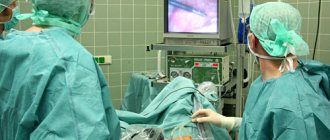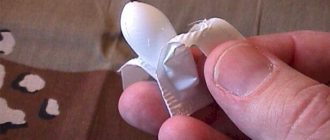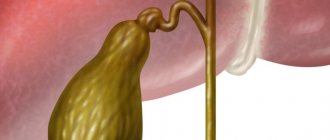Typically, a suture after appendicitis does not heal for very long and, in the absence of complications, can become almost invisible. Recovery largely depends on the individual characteristics of the body and the age of the patient. And care for the postoperative suture must be thorough, using all the doctor’s recommendations. This will help avoid inflammation, speed up healing, and affect the appearance and size of the scar.
How do stitches heal after surgery?
Traces after the laparoscopic procedure remain almost invisible. If a classic abdominal operation was performed, then proper removal of sutures after appendicitis is an important stage in the patient’s recovery.
Resection of the appendix involves sequential dissection of the layers of tissue overlying the appendix, its removal, subsequent stitching of the tissues and ligation. In this case, the seams are external and internal.
Healing of postoperative wounds lasts from one month to a year, depending on the individual condition of the patient.
Typically, the length of the outer suture is between 7 and 10 cm. The incision is a slightly inclined horizontal line on the right side, slightly above the pubis. In patients with a significant layer of fat or in case of complications, the suture can reach 15 cm in length. As a rule, it is made with silk or artificial threads. The stitches remain on the skin for up to 12 days.
The internal suture after appendicitis resolves on its own in about a month and a half. It is performed with a special suture material – catgut. During manipulation, the tissues of the mesentery and abdominal wall are connected. Sometimes a special synthetic thread is used to stitch together the internal tissues of the abdominal cavity.
Based on the patient’s condition, the surgeon determines the timing of removal of sutures after appendicitis on an individual basis.
Features of the scar during appendicitis removal
A scar is formed during tissue regeneration after an inflammatory process or mechanical damage. The basis is connective tissue, which replaces others, but at the same time the sensitivity and functionality at the site of scarring is significantly reduced.
Scars after appendectomy have a number of features:
- The size varies from 3 to 25 centimeters. A long scar occurs when there are complications during surgery. Currently, laparoscopy is used in surgery, and instead of an unsightly scar, barely noticeable punctures remain.
- At first, the scar is pink or reddish in color, itchy, itchy, and there may be a burning sensation.
- It is localized several centimeters above the pubic area, mainly on the right side, but can be in the center and left, depending on the individual physiology of the body.
How to treat sutures after appendectomy
After the last stitch is applied to the wound, the patient is transported to the recovery room and the anesthesia ends, the postoperative period begins. It continues until the patient is fully able to work.
During the rehabilitation period, it is necessary to carefully monitor the condition of the suture and take measures to promote faster healing. Treatment of sutures after appendicitis in a clinical setting is carried out using skin antiseptics such as:
- medical alcohol,
- fukortsin,
- iodinol,
- castellani liquid,
- three percent hydrogen peroxide.
After treatment, the wound is dried and covered with an antiseptic bandage. With the competent actions of medical workers, the wound after surgery does not require special care at home.
What to look for?
When contacting a tattoo artist and choosing a design, you need to think not only about how beautiful the picture looks on paper or your computer screen. It is much more important to choose an option that would allow the use of a “landscape”, that is, it would pass exactly along the surface of the scar and surrounding tissues, overlapping it in shape and color. Remember that the surface of a healed wound is not skin, but connective tissue. Therefore, even the standard colors of tattoo machine inks will look different on it than usual. Unfortunately, it is impossible to check this in advance. Therefore, do not be surprised if the color scheme of the finished drawing differs from what you saw in the sketch.
It’s better not to rely on the fact that there will be a picture in the salon catalog that is ideal for you personally. Therefore, it is better to let the master study the shape and size of the scar, and draw an individual example for you of a future tattoo at the site of the scar.
Tattoo on the site of a scar in the form of a wing
The design will depend on gender, age, skin color, shape of the lesion on the skin and other factors. Also, do not forget that each specialist has his own technique and set of skills. Make sure that the specialist's specificity suits you.
If something went wrong
On the Internet you can find many photos of a suture after appendicitis with normal healing and with a complicated course. Having an idea of what the wound should look like will be useful to monitor the recovery process and prevent complications.
Due to poor appendectomy technique, poor scar care, or the body’s individual reaction, the following symptoms may occur:
- pain in the incision area does not go away for a long time,
- the seam is swollen and split,
- compactions or nodules have appeared under the stitches,
- pus or serous secretion is released,
- the stitches came apart
- the patient has had an elevated body temperature for more than three days,
The presence of even one of them is a reason to go to the hospital or call an ambulance. In case of wound infection and inflammation, antibacterial therapy is carried out.
A hard suture after appendicitis is not always a cause for concern. Connective tissue forms in the healing area. Its denser structure is due to the lack of collagen, which provides skin elasticity.
Over time, the seam will become more elastic, and skin sensitivity will be restored. The use of special dermatocosmetological preparations will help to activate these processes. Neglecting them may be one of the explanations why the suture hurts after appendicitis 2 months later, if there is no inflammation, suppuration or dehiscence of the wound edges. The skin at the scar site has not acquired elasticity and tightens when moving, causing discomfort.
Pain when feeling a scar may indicate an adhesive process (excessive growth and compaction of connective tissue). In this case, you should contact a surgeon
How long does it take for a scar to heal?
The healing process is best considered in stages:
- Inflammatory process due to mechanical irritation, that is, surgery to remove appendicitis. The duration of the stage is several days, provided that local and systemic medications are given in the hospital.
- Seal. Collagen synthesis increases, fibrinous tissue hardens, and trophism worsens. Redness decreases, swelling is less pronounced, the scar begins to hurt less, but the itching increases. Hardness appears at the location of the scars.
- Aging. The scar gradually brightens and changes its color (from light pink to yellow or brown), and rises above the surface of the skin. If the scar from appendicitis hurts for a long time, you should consult a doctor, because there may be an inflammatory process, a hernia, or the result of erroneous actions of the surgeon.
The exception is women during pregnancy; they may experience discomfort in the area of the scar.
The healing process takes from 4-7 months to a year. With normal tissue regeneration and proper care, the average period is six months. Women will heal faster than men, and children, due to their accelerated metabolism, will recover in 7-10 weeks.
When are the stitches removed?
The normal time frame for removing sutures after appendectomy is 7-10 days. The main factor determining how long it takes to remove sutures after appendicitis is the state of wound healing. Its speed depends on the degree of surgical intervention, the age of the patient, the general condition of his body and how accurately he follows medical instructions.
The healing of the suture is indicated by the presence of a healthy “crust” (granulation). If the sutures are the same color and do not have seals, nodules, swelling or other complications, they are removed in the manipulation room.
Many patients are concerned about whether it is painful to remove stitches after appendicitis. You should not be afraid of this procedure. It lasts a few minutes and is usually well tolerated by patients. The feeling of skin tightening is not pleasant, but there is no sharp pain.
After the stitches are removed, the patient is discharged for home rehabilitation. During this period, it is important to follow a gentle regimen. Excessive stress or careless movements can cause even well-healed wound edges to separate.
Complete tissue regeneration after cutting and stitching lasts up to six months on average.
Ways to speed up healing
Immediately after the operation, specialists deal with the treatment of the suture. Dressing is done twice a day and consists of removing the old bandage, treating with hydrogen peroxide, an antiseptic (to prevent infection) and applying a new bandage.
Upon discharge from the hospital, the patient, among the medical instructions from the surgeon, receives recommendations on how to smear the suture after appendicitis. Proper treatment of sutures is very important so that the scar after surgery remains as invisible as possible.
Levomekol, all ointments containing panthenol and milk thistle oil have a regenerating and anti-inflammatory effect.
For the first time after surgery, you should not visit beaches and solariums, so as not to expose the scar to ultraviolet rays. In order not to disrupt the healing process of the suture, in the first two weeks it is recommended not to take a bath, but to replace it with a shower. After the water procedure, it is necessary to treat the seam with a 5% iodine solution or a weak solution of potassium permanganate.
The underwear should be cotton and non-pressure.
Care to prevent complications
The appearance of the scar after rehabilitation depends not only on the actions of the surgeon, but also on the postoperative care that the patient will provide. To ensure tissue restoration is quick and painless, you must follow several rules of prevention:
- 2-3 weeks after surgery it is necessary to completely avoid heavy physical activity in order to avoid damage and suture dehiscence.
- For 2-3 weeks, the patient must follow a diet that excludes foods that provoke gas formation in the intestines (legumes, cabbage, baked goods, soda), eat in small portions - all this is necessary so that the abdominal wall does not stretch too much during the day.
- Alcohol and nicotine prolong the recovery period as they affect the pressure in the blood vessels, and tobacco tar makes their walls more fragile.
- It is necessary to drink enough fluids and eat soft foods to avoid constipation, since you cannot push or strain your abdominal muscles.
- It is necessary to wash the scar 1-2 times a day, since at first ichor, lymph or blood may be released from it, forming crusts.
- The scar must not only be cleaned, but also treated - the doctor selects drugs for external antiseptic and healing therapy individually for the patient.
How to deal with scars
If everything was done correctly in the clinic, then the scar after appendicitis does not need special care.
The main concern for many patients in the postoperative period is how to hide the visual trace of the operation.
To activate the regeneration process, normalize metabolism in tissues and stimulate the resorption of keloid scars, ointments and dermatocosmetic gels are used: Collost, Contractubex, Solcoseryl, Mederma, Kelofibrase, Detramix, Zeraderm, etc.
These effective medications can make even old appendicitis scars less noticeable. For the same purpose, proven folk remedies are used: badyagu, recipes based on melon and nutmeg.
Old scars can also be removed using laser, chemical peeling, dermabrasion and plastic surgery.
Middle-aged and older people are quite tolerant of the presence of an appendicitis scar on the abdomen. But young people, especially girls, are much more concerned about the beauty of their body.
The way to obtain a cosmetic stitch after appendicitis is laparoscopy. But it often leads to complications, so surgeons prefer resection.
Interesting information about tattoos on appendicitis scars
- Scars from appendicitis are extremely common and some time ago were a clear problem for anyone who had to deal with such an operation.
- Today, the operation itself leaves behind a less noticeable and noticeable scar, which is successfully hidden with the help of a tattoo, which is applied over the appendicitis scar.
- Covering a scar with a tattoo is a much less complicated procedure than plastic surgery to hide a scar, and it allows you to hide a scar no less effectively with greater aesthetic appeal.
- Looking through our selection of tattoos on an appendicitis scar, photo, which is located at the very bottom of the page, you will see how with the help of a tattoo you can get rid of a scar that may be unpleasant for you for a long time.
Such tattoos are applied to the body by both men and women. They are usually performed by highly professional tattoo artists, because... Such work requires special skills and abilities.
Photo from 09/01/2016
Watch the video
MEANING OF A TATTOO ON A SCARF FROM APPENDICITIS
Source: https://tatufoto.com/pictures-of-tattoos/fotografii-kartinki-tatuirovok-po-prinadlezhnosti/tatu-na-shrame-ot-appendicita-foto/
When to start scar treatment
According to medical statistics, every tenth person is prescribed an appendectomy every year. After the operation, a scar remains, which is difficult to get rid of. But, if you start treatment at an early stage, when the scar from appendicitis is still young, you can make it almost invisible.
If the patient misses this period, then it will most likely not be possible to make the scar less noticeable using conservative methods. In such cases, you will have to resort to surgical treatment.
Covering scars of varying complexity with tattoos
After surgery, unsightly marks often remain on the body. Scars from scalpel excision are very noticeable on the abdomen. If you want to cover the defect using a tattoo on an appendicitis scar, this will not be difficult to do. In this case, the size, shape and age of the scar do not matter. The technician will do the job without any problems.
It is much more difficult to hide a scar after breast removal. Attempts by doctors to restore breast shape may not produce good results for patients. Beautiful body designs will help completely disguise the flaw.
If an operation was performed on the heart with an opening of the chest, a large scar always remains in its central part. Instead of removing it with a laser, a person can simply agree to disguise it with pigment.
Tattoo on a burned surface
Boiling water and chemicals easily damage the integrity of the skin. It will not be possible to restore their natural appearance due to the lack of suitable techniques. Apart from skin grafting, which is an expensive procedure, the only option left is to get a tattoo on the burn scar.
A specialist will fill a damaged surface of any size with a beautiful design. Ink-treated ridges on the skin make the image more realistic.
Correction of scars after caesarean section
For various life reasons, some women have to agree to a caesarean section. If the baby cannot be born naturally, it is removed from the mother's womb through an incision in the abdomen. Whether it will be longitudinal or transverse depends on the location of the fetus. But the quality of the scar depends on the skill of the doctors.
Subsequently, women are embarrassed to wear open swimsuits and try to hide the part of the body damaged by childbirth. A tattoo on the Caesarean scar in the form of a bird, dragon, floral design, or feather will help them correct the situation.
When choosing a pattern, the master takes into account the length and thickness of the scar. The image looks so natural and impressive that it is impossible to see the unevenness on the stomach without a close look.
Creating a tattoo on scars
It is not difficult for an experienced specialist to tattoo on scars. He knows that to get a good quality picture you need to use several colors at the same time, and not limit yourself to one tone. Irregularities are perfectly hidden by shadows, highlights, and midtones. Scar tissue may absorb small amounts of ink because the structure of the skin in the operated area is disrupted.
Before agreeing to the procedure, a person will probably ask whether it hurts to get tattoos on scars and scars. The sensations depend on the threshold of pain sensitivity and the part of the body on which the pattern is applied using needles. For overly sensitive individuals, the specialist offers treatment with an anesthetic gel.
Subsequently, it is recommended to lubricate the image daily with antibacterial ointment. The resulting crust cannot be torn off manually. It should dry well and fall off on its own.
You also need to know in what cases it is prohibited to decorate scars with tattoos - there are several contraindications:
- HIV.
- AIDS.
- Diabetes.
- Days of menstruation.
- Allergy to pigment.
- Bronchial asthma.
- Pregnancy.
- Breastfeeding period.
- State of alcoholic intoxication.
Other diseases and pathological conditions are not included in the list of contraindications. However, in order to avoid unpleasant consequences, it is better to consult a dermatologist about whether it is possible to get a tattoo on a scar in a particular case.
Tattoo ideas for scars on girls
Since the fair sex is most concerned about the beauty of their body, we invite them to look at a selection of photos - what tattoos there are for girls on the stomach on a scar.
Scars in men and women: differences
Appendicitis scars take longer to heal in men than in women. This is due to anatomy - the fibers of male muscles are coarser. But the main reasons lie in violation of medical rules.
It is noticed that:
- Men are more likely to neglect their diet.
- Out of habit, they do not measure the weight of the things they lift.
- They forget to use cosmetics to heal wounds.
After a year, the scar from appendicitis completely heals and cannot be corrected. The only way to get rid of it is to cover the appendicitis scar with a tattoo.
The scar will become smaller if you take care of it
Kinds
Patients experience the stage of scarring and restoration of the skin differently. Therefore, the site from the incision during appendicitis surgery appears in each person of a different size and shape, and it takes a different period of time to heal.
- Normotrophic – type of scar: the simplest, pale, invisible. Externally it does not cause irritation, as it does not stand out against the background of the skin. It looks like a thin strip at the incision site, can be corrected, and complete removal is possible using modern methods - laser resurfacing, for example.
- Hypertrophic - the scar is thick, hard, voluminous, rises above the patient’s skin, and is brighter in appearance than the rest of the skin. This type is more difficult to remove. Long-term correction by grinding, therapy with medications, ointments or current treatment can make the surgical site less noticeable.
- Atrophic - unlike hypertrophic, it does not rise, but, on the contrary, sinks into the skin. This happens due to a lack of connective tissue during healing or errors in caring for the incision. To add aesthetics, you will have to raise the seam to the surface. More often this can be done with injections, fillers, cosmetic fillers for skin volume, and hormonal therapy may be required. It is not possible to completely remove it.
- Keloid is an outwardly unattractive, dangerous appearance. It occurs when scarring fails and does not heal for a long time; collagen is released in large volumes and does not stop releasing for a long period. It is difficult to correct, because any manipulation causes complications in the form of additional collagen production and increases in size again. Can remain unchanged for a long time. It looks rough, especially for women who do not have the opportunity to wear open clothes and swimsuits on the beach with such a scar.










